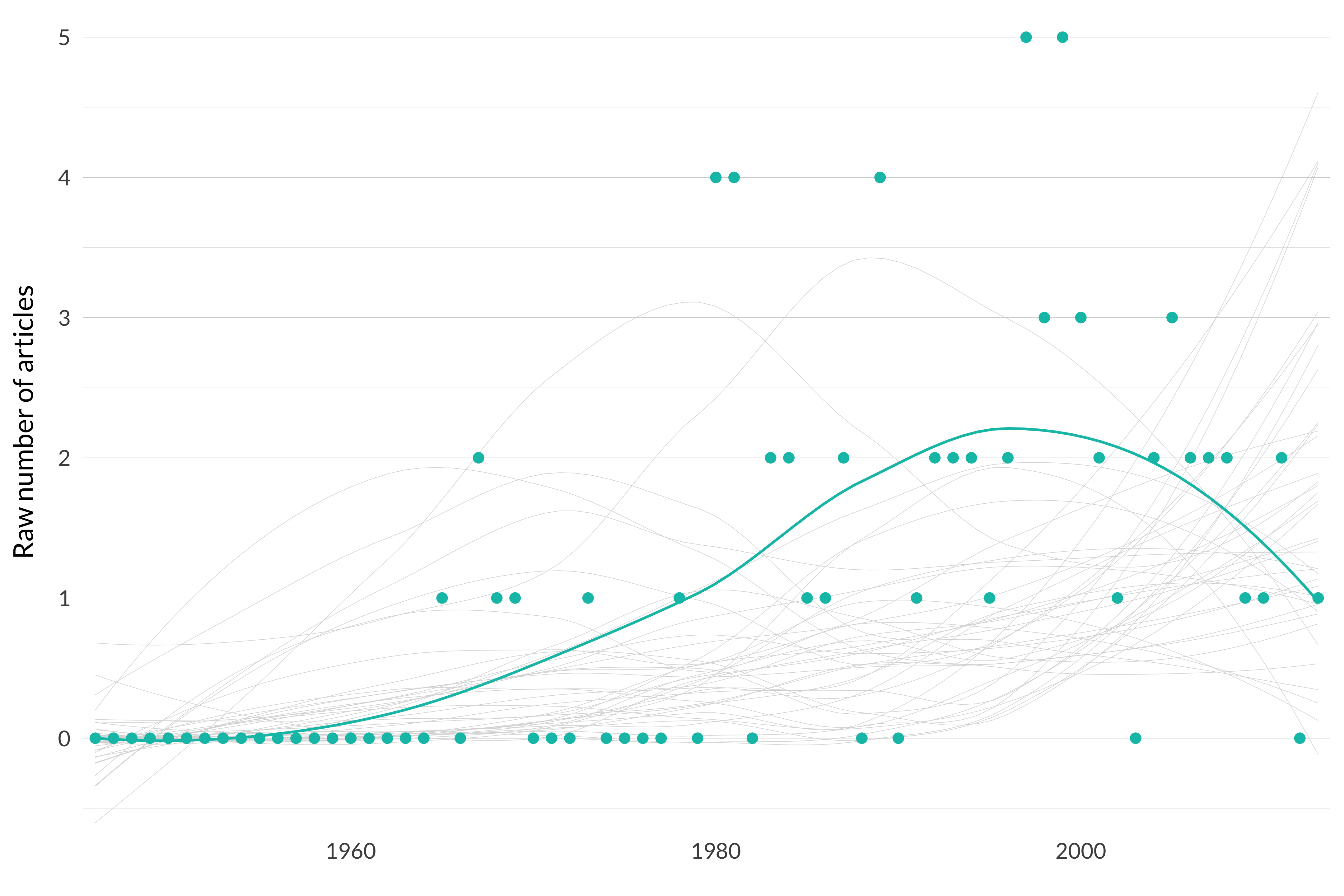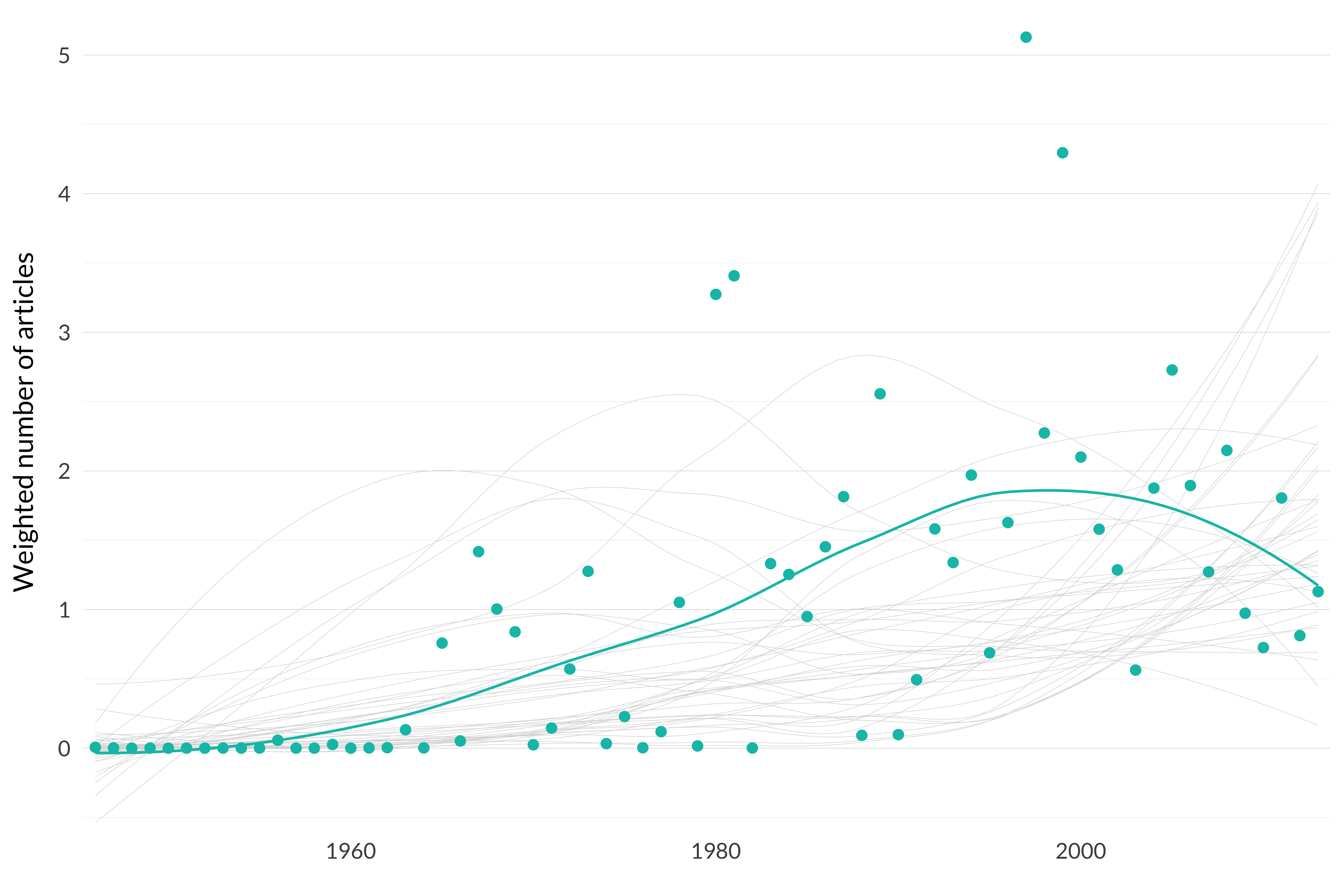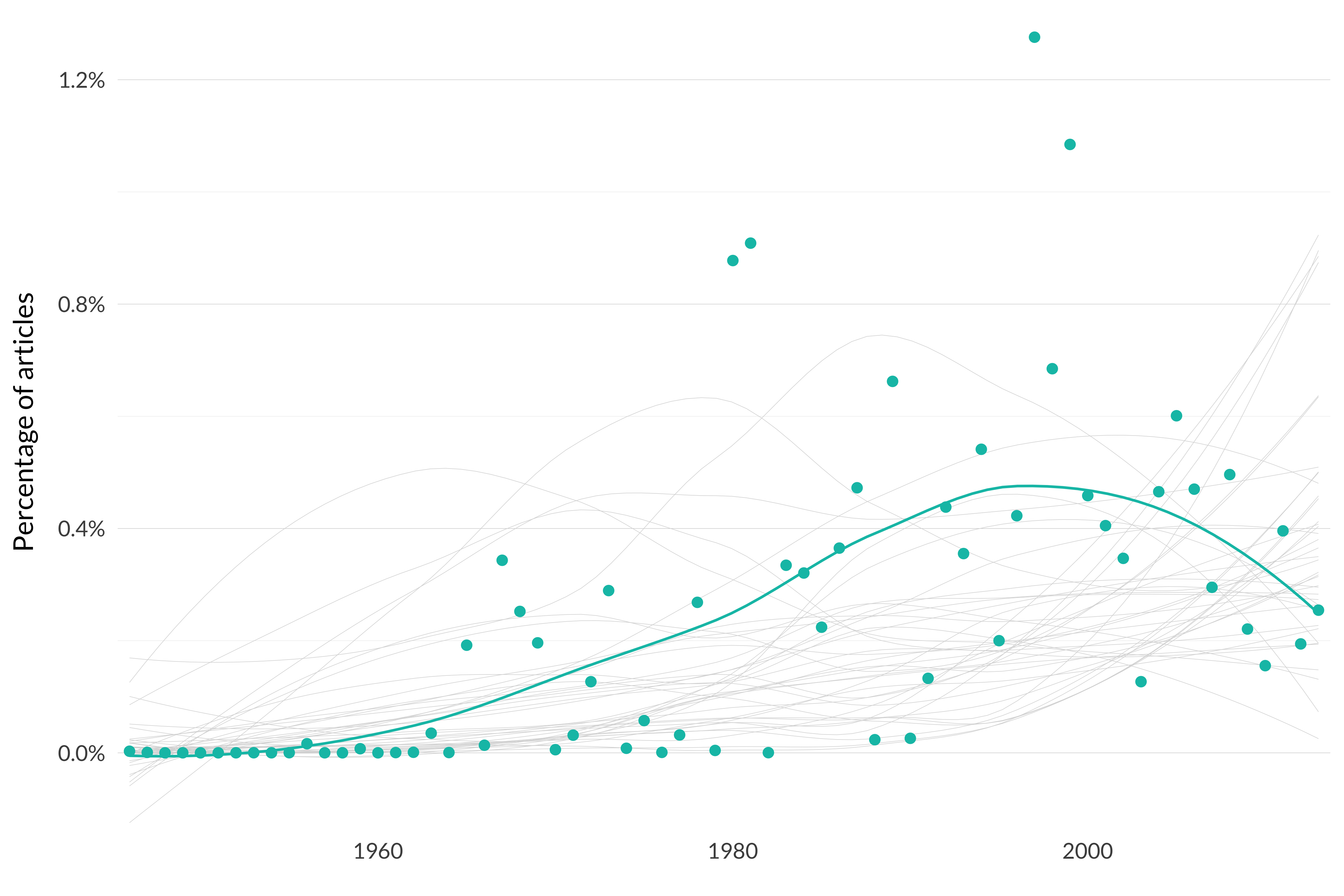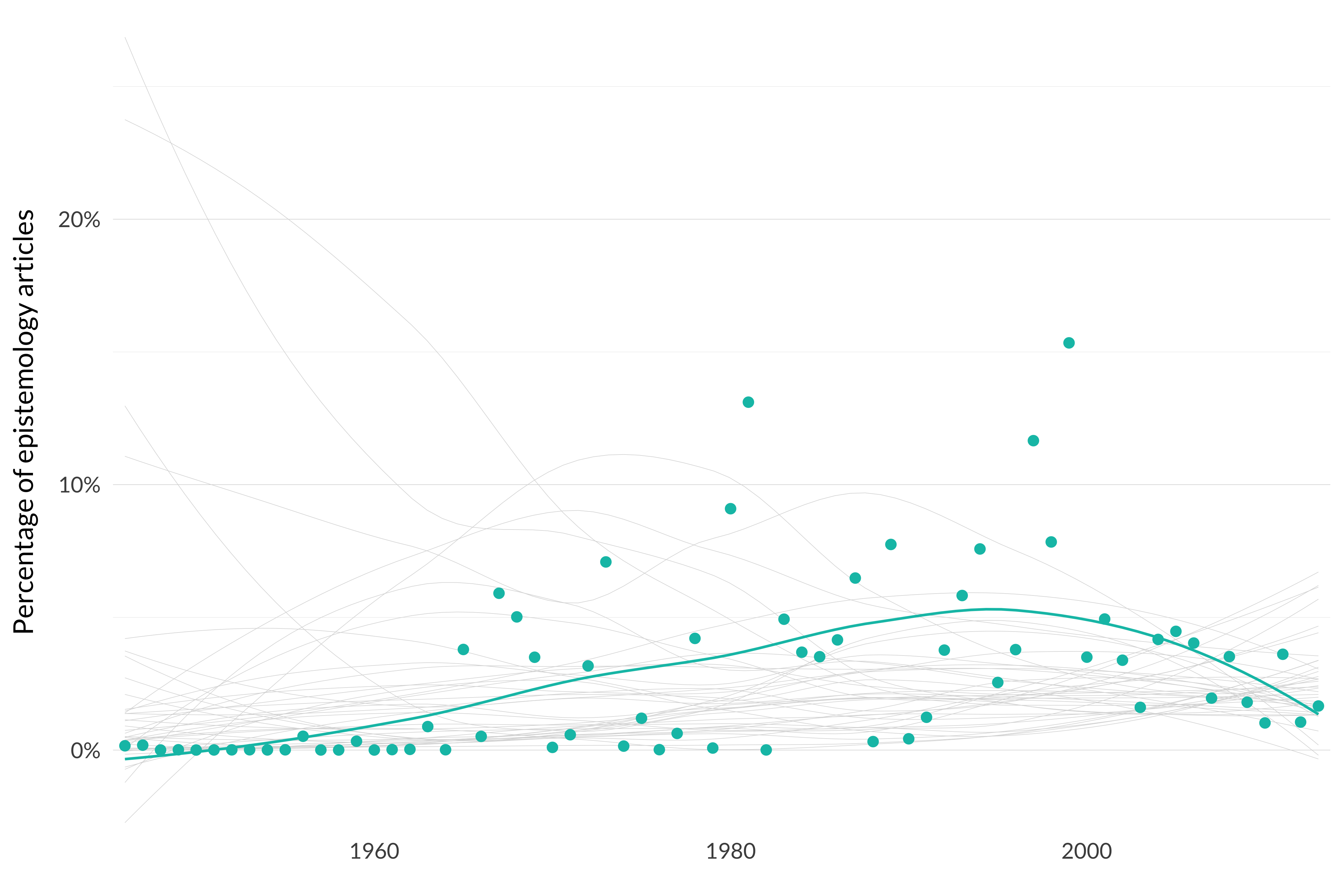6.20 Conditionalisation
Keywords: betting, dutch, jeffrey, bayesian, bets, fair, book, confirmation, updating, fraassen, distribution, partition, bet, probabilities, conditionalization
Number of articles: 72
Weighted number of articles: 64.35177

Figure 6.85: Raw number of articles in topic 20, conditionalisation.

Figure 6.86: Weighted number of articles in topic 20, conditionalisation.

Figure 6.87: Percentage of philosophy articles in topic 20, conditionalisation.

Figure 6.88: Percentage of epistemology articles in topic 20, conditionalisation.
Characteristic Articles
- Geoffrey Hellman, 1997, “Responses to Maher, and to Kelly, Schulte, and Juhl,” Philosophy of Science 64:317–22.
- Brian Skyrms, 2006, “Diachronic Coherence and Radical Probabilism,” Philosophy of Science 73:959–68.
- Frank Döring, 1999, “Why Bayesian Psychology is Incomplete,” Philosophy of Science 66:S379–S389.
- J. M. Ryder, 1981, “Consequences of a Simple Extension of the Dutch Book Argument,” British Journal for the Philosophy of Science 32:164–7.
- Klaus Heilig, 1978, “Carnap and De Finetti on Bets and the Probability of Singular Events: The Dutch Book Argument Reconsidered,” British Journal for the Philosophy of Science 29:325–46.
- Colin Howson and Allan Franklin, 1994, “Bayesian Conditionalization and Probability Kinematics,” British Journal for the Philosophy of Science 45:451–66.
- Bas C. Van Fraassen, 1981, “A Problem for Relative Information Minimizers in Probability Kinematics,” British Journal for the Philosophy of Science 32:375–9.
- Brian Skyrms, 1993, “A Mistake in Dynamic Coherence Arguments?,” Philosophy of Science 60:320–8.
- Bas C. Van Fraassen, R. I. G. Hughes and Gilbert Harman, 1986, “A Problem for Relative Information Minimizers, Continued,” British Journal for the Philosophy of Science 37:453–63.
- Brian Skyrms, 1987, “Dynamic Coherence and Probability Kinematics,” Philosophy of Science 54:1–20.
Highly Cited Articles
- C. Van Fraassen, 1984, “Belief and the Will,” Journal of Philosophy 81:235–56. (0.4240369)
- Ian Hacking, 1967, “Slightly More Realistic Personal Probability,” Philosophy of Science 34:311–25. (0.6524467)
- Bas C. Van Fraassen, 1981, “A Problem for Relative Information Minimizers in Probability Kinematics,” British Journal for the Philosophy of Science 32:375–9. (0.9977752)